This pair of stunning and rare Harley-Davidson racers give an amazing insight into the brand's strong racing heritage, a time when they led race development. Images: Knackers BDP
Harley is one of those companies that have been at the forefront of technology since its early days of production way back in 1903. Harley dominated racing in the teens, twenties and thirties with bikes that competed on board track, hill climb and oval dirt racing.
These were the popular disciplines of the time and Harley built special bikes for their riders to race and looked after those racers that had the talent to win. The Second World War came and went, motorcycle racing picked up again and the manufacturers got involved, some things did change from the pre-war types of racing.
Board tracks were gone for good, hill climb was popular still but as big and road racing was making big in roads in America. Dirt track was still very popular and the number one motorcycle sport in the USA.

The Harley Davidson XR 750 TT was a leading racer for an extended period of time, proving a dominant force
Bikes after the war were 750cc for a side valve twin or 500cc for an overhead valve single, and as a result racing was close and fast. It also set the bench mark for the type of bikes, how they could be constructed within the rules and what types of racing could be done.
It was predominantly flat track on mile or half mile tracks but there was also TT races with some jumps and both left and right corners, TT led into road racing a bit later on, once bitumen tracks started to appear around the country.
Harley had variants of the 750cc flat tracker over the years, first it was a side valve based around the WWII army bike, the WLA, re-named for racing as the WR. Then in 1952, came the first Sportster models which were still 750cc side valve but with unit construction motor and gear box and an all new frame with swingarm and rear shocks.
These were the K models and they were still very successful at flat track and also were quite good at road racing. In fact Harley spent a lot of time developing the road race models, as competition had increased with both a change of rules – requiring all bikes to be 750cc whether overhead valve or side valve – and the invasion of British bikes at first and then later the Japanese machines.
Harley had the experience with the side valve layout and was making similar power to the overhead valve competition, so they stuck with the motor but worked hard on the chassis and bodywork to make the bike fast through the air.
In 1972 Harley released an all new, all alloy 750cc overhead valve model for racing, the XR 750. They did have an overhead valve for a few years before this model, but it was cast iron heads and barrels and didn’t really work all that well.
It was however a good base to develop a chassis, suspension and bodywork package that was world class, and would with time prove to be way superior to the competition for years. Road racing was now part of the required championship races each year, meaning that it shared the development phases of the factory with the flat track bikes.

Road racing was actually a driving force behind much of the development, being extremely competitive
Road racing though, is far more complex than dirt racing so as the years went on the development of the XR 750 for road racing was enormous and thorough. The XR 750 was a major contender in the road racing of the ‘70s and early ‘80s. It wasn’t until another rule change came into effect to allow three- and four-cylinder machines to compete in America that the Harley XR 750 started to struggle to win races.
So, that’s a bit of history into how the XR 750 became a road racing motorcycle and how it became known as the XR 750 TT. The 750 was campaigned in Europe, the U.K. and also New Zealand in the hands of the Harley Factory riders of the time, one of the most famous was Cal Rayborn.

Cal Rayborn was a name synonymous with the XR 750 TT, having raced it around the world and had a large impact on the development
He was legendary among those of the time and travelled overseas with his XR 750 TT to compete. He won most of the time, but as is often the case, he was killed in a race, in New Zealand. The XR 750 TT really was the end result of Cal Rayborn’s input over the years, he was by far the best road racer Harley had, and the bike was developed around his needs and his opinion as to what was needed.
The formula worked and the success of Cal and others has been well documented over the years. Harley has always been very conscious of history and the heritage that comes with that. So, in 1983 Harley released the XR 1000 Sportster, a road legal version of the XR 750 but punched out to 1000cc.
It wasn’t the short stroke engine of the 750, but it made great power and there was a race kit as well! To cement this model as a winner in the public’s eye, Harley had been secretly working on a race version of this XR 1000 and it was debuted at Daytona that year for the “Battle of the Twins” series.
The bike was called “Lucifer’s Hammer” and was based on the same chassis, bodywork and suspension from the 750 TT racers. It had the best of the best working on this monster, and they also had Jay Springsteen, three time national champion, riding the bike.
History was made that weekend at Daytona, Jay won and the XR 1000 race bike and road bike became legendary overnight. Lucifer’s Hammer was campaigned for a number of years in the battle of the Twins series, a natural home for the big XR 1000. It eventually was retired when the Italians turned up with Ducati.
Lucifer’s hammer is still being raced now, but in the historic road racing series in the USA and its success is still up there wining many races with the stars from the past still riding the bike.

Jay Springsteen took the XR 1000 to victory at Daytona in the Battle of the Twins, and became an overnight success
The success of the XR 750 and XR 1000 in road racing has spawned and entirely new industry. There are now companies in the USA and Europe that make exact replica components of the XR’s and can even build complete bikes for customers of both the XR 750 and the XR 1000.
Many of these replicas have been or are being raced in series around the world. The unique nature of these bikes makes the replicas very valuable and expensive to build. They aren’t the real deal, there were only a handful of the real bikes ever made for road racing. So the replica is the next best thing, but because they are such true replicas of those famous bikes they command the attentions of racers and collectors alike.
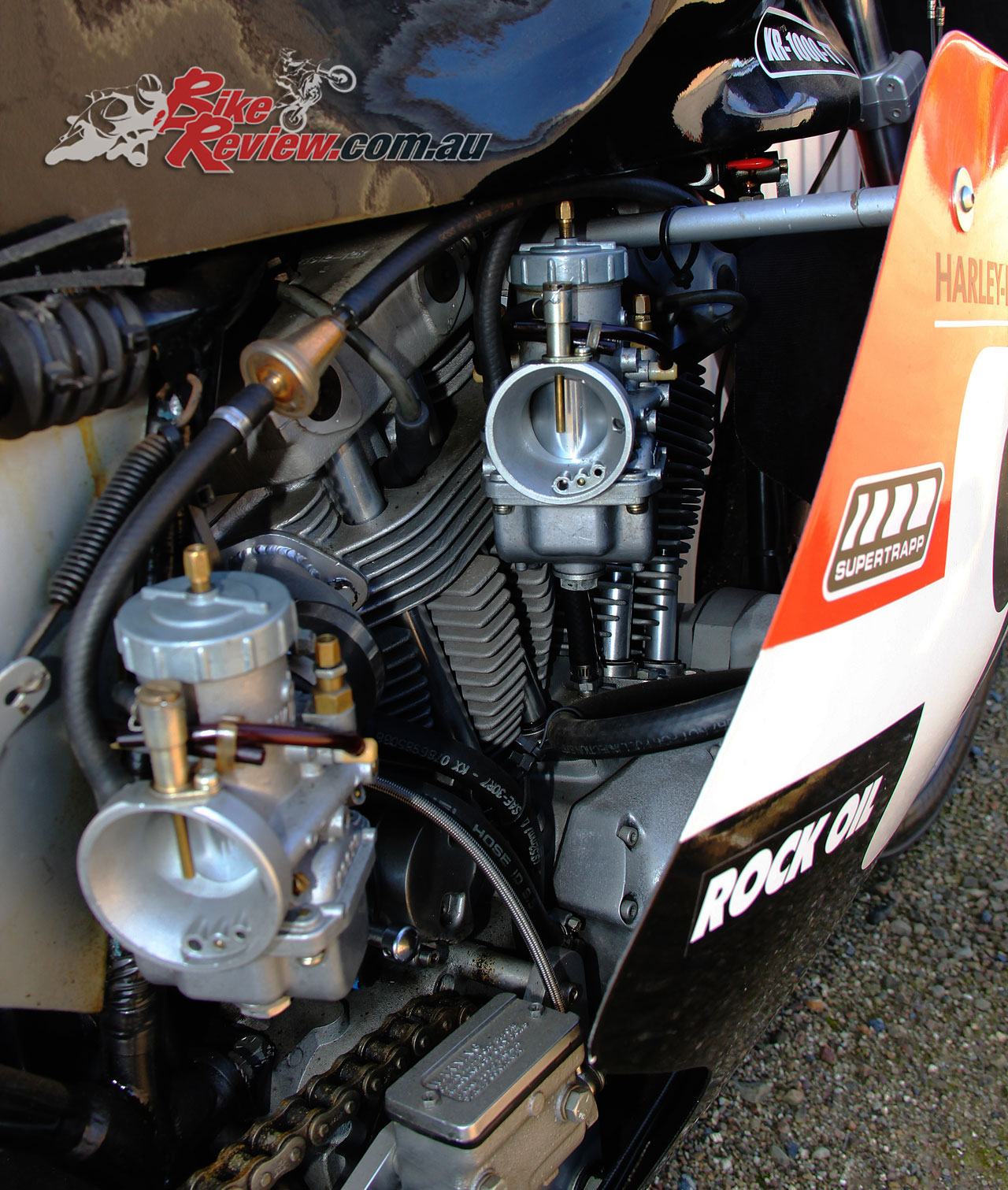
Such limited quantities of both machines were produced that now, for many, the next best thing is a true to the era replica, with companies producing parts around the world
To have a replica of the Cal Rayborn XR 750 TT or the Jay Springsteen XR 1000 TT is a rare and a desirable thing to have. The two bikes featured in this story are just that, they are replicas, but they are nut and bolt correct copies of the original bikes.
They have rare and valuable parts on them that can recreate the time in history that these two Harleys dominated the road racing scene in America and, around the world. They stand out from any other brand out there, they are both monster engine examples of racing history that needs to be kept and preserved.
Both these bikes show signs of age and use, but to me that adds to the special qualities of the two, it shows that they were built to be used, not just looked at.
The correct type of drum brakes are fitted to the XR 750, the correct wheels on both bikes for the period. The correct body work is fitted to both bikes, the controls and levers on both all correct and how they set them up back in the day is all correct. Both bikes just ooze quality and show what that era of Harley and American road racing was about.

Wheels are also true to form, with the 750 running spoked wheels with alloy rims, and the 1000 alloy wheels
Many think of Harley-Davidson as a cruiser type of bike, many collect Harleys that fit that mind set. But there is a big part of Harley-Davidson that was racing and there are many desirable race bikes that Harley built. Unfortunately, unless you are either an original owner or you have inherited one of these rare race bikes you will never be able to get your hands on one.
Those that do come up for sale are so expensive that they are out of the reach of us mere mortals. To be able to build or obtain a replica is the next best thing, and to be still able to afford one of these replicas is still expensive. What a fantastic part of history to be involved in, and what a motorcycle to own.
Harley Davidson XR 1000 Gallery
Harley Davidson XR 1000 (stock) Specifications
Claimed power: 52.6kW[70hp]@5600rpm
Claimed torque: 65Nm[48ft-lbs]@4400rpm
Dry weight: 228kg
Fuel capacity: 9.5L
Engine: Air-cooled, four-stroke, 45° V-Twin, OHV, two-valves per cylinder, 998cc, 81 x 96.8mm bore x stroke, 9:1 compression ratio, dual 36mm Dell’Orto carburettors
Gearbox: Four-speed
Chassis: Welded steel tube frame
Suspension: Telescopic forks, dual rear shocks
Brakes: Dual 292mm front rotors, single 292mm rear rotor
Wheels & Tyres: 100/90 – 19, 130/90 – 16
Harley Davidson XR 750 TT Gallery
Harley Davidson XR 750 TT (stock) Specifications
Claimed power: 70-100hp
Fuel capacity: 23L
Oil capacity: 3.785ml
Engine: Air-cooled, V-Twin, push-rod two-valve, 9748cc, 79 x 76mm bore x stroke, dual 36mm Mikuni carburettors, tuned dual reverse cone exhaust
Gearbox: Triple chain primary, four-speed, chain final drive
Chassis: Steel twin loop full cradle
Rake: 24°
Trail: 92mm
Suspension: Ceriani telescopic fork, twin Girling shocks
Brakes: Four leading shoe drum, single disc rear disc brake
Wheels & Tyres: Spoked wheels, aluminum rims, 3.00 x 18in, 3.50 x 18in
Wheelbase: 1400mm
Seat height: 710 mm
Dry weight 147kg claimed






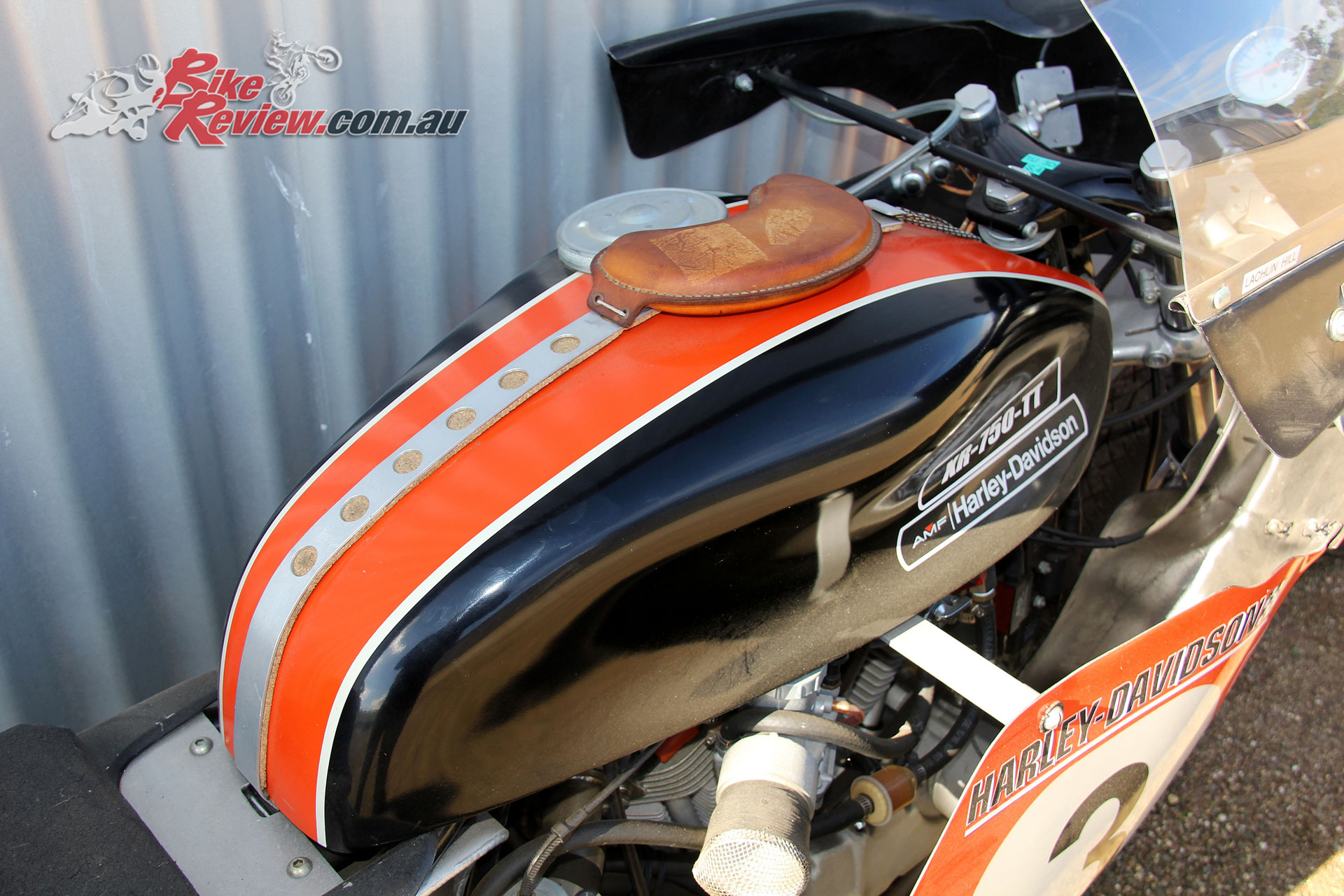



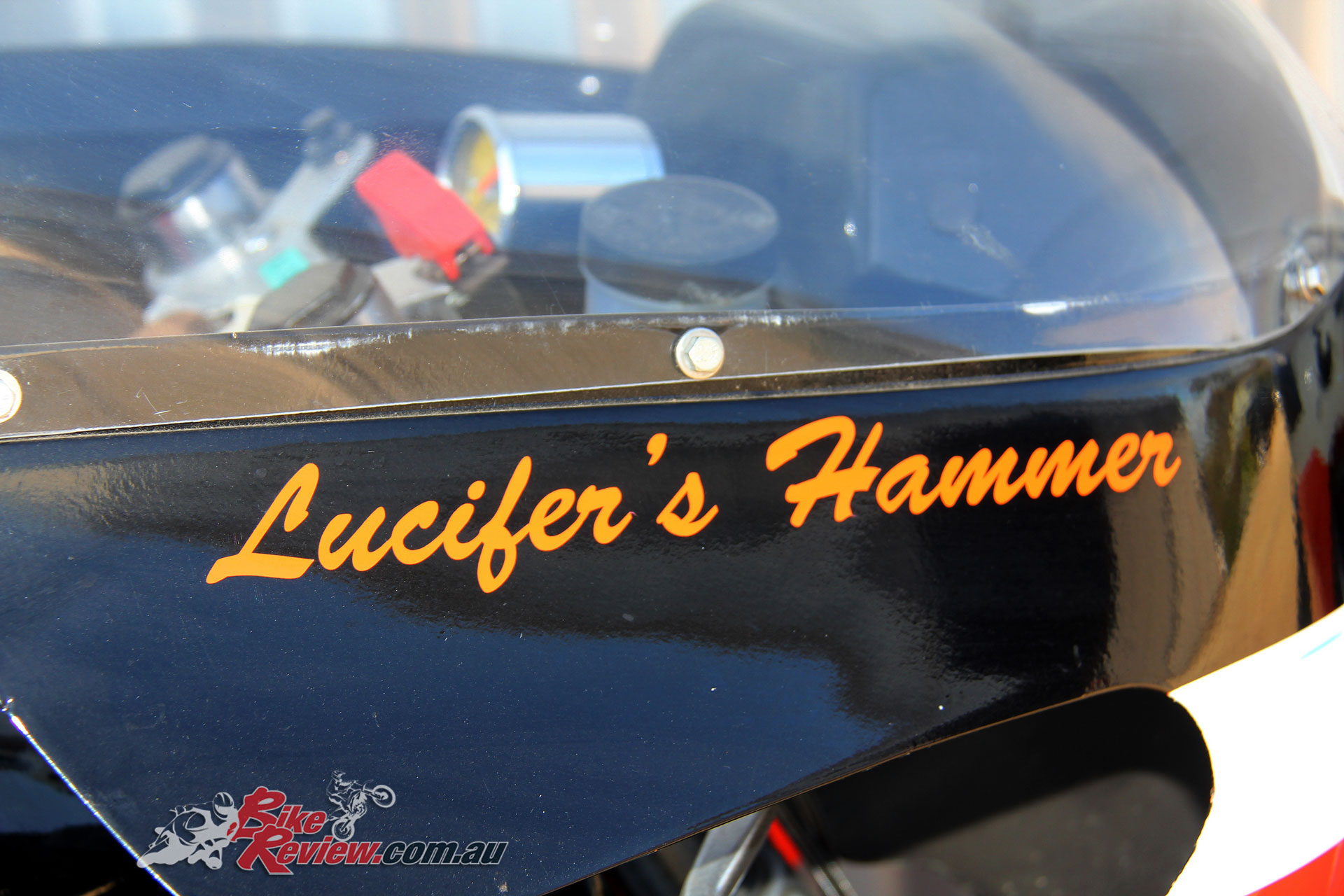

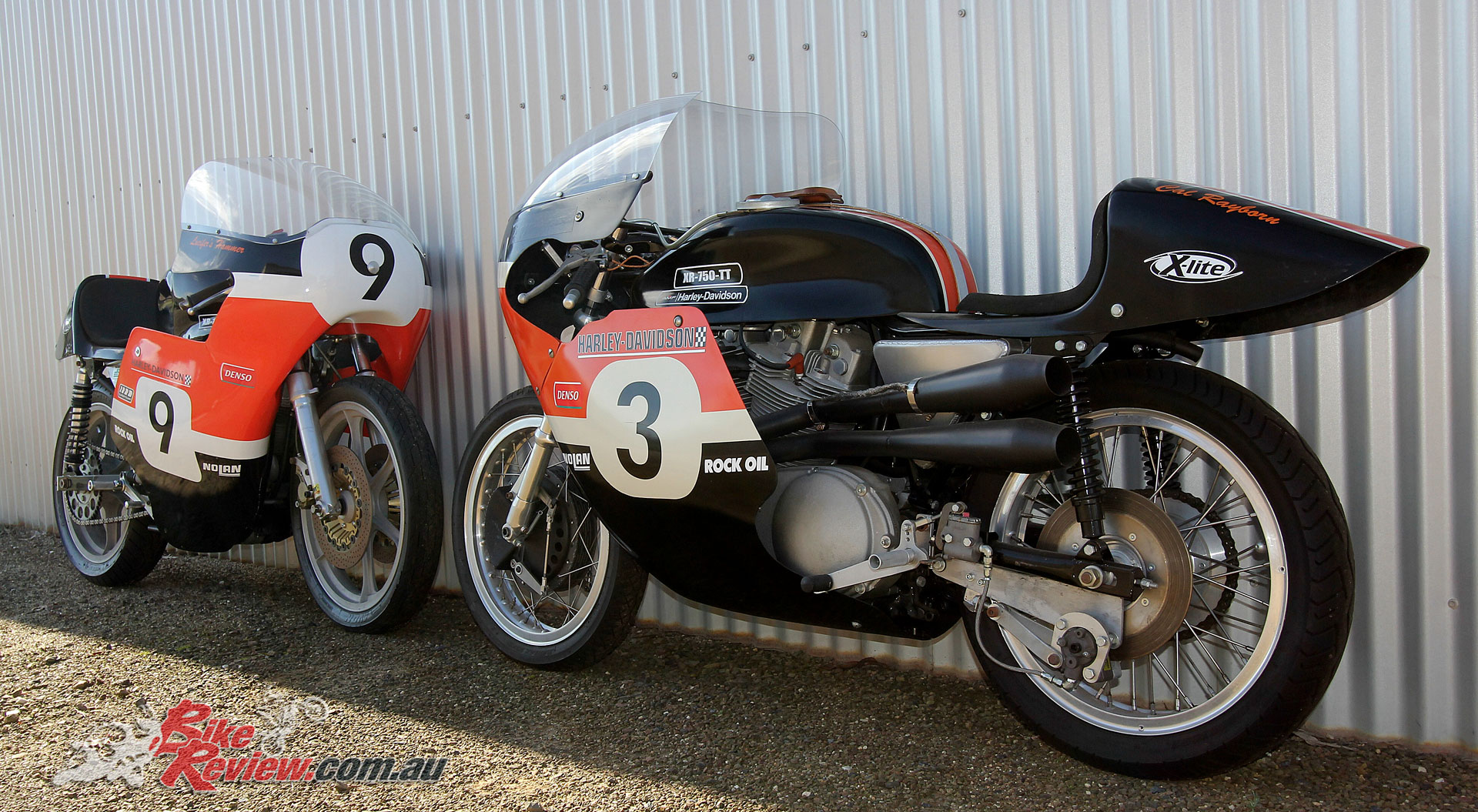

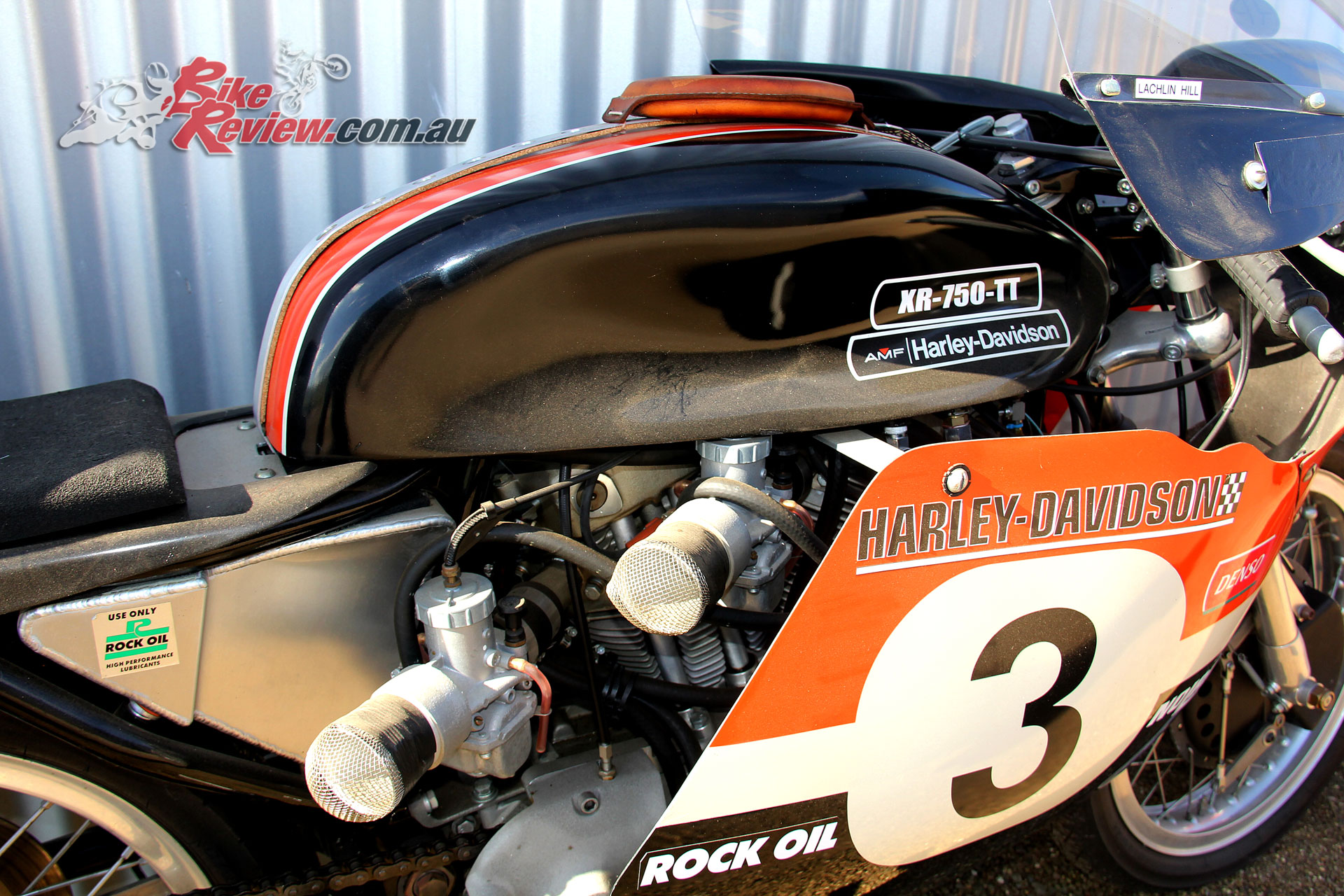












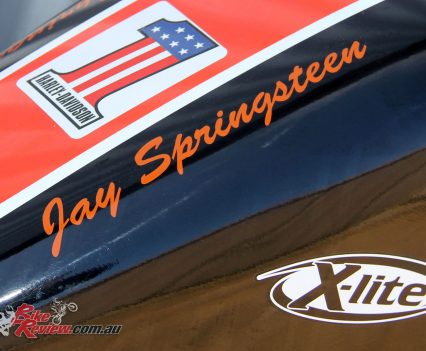


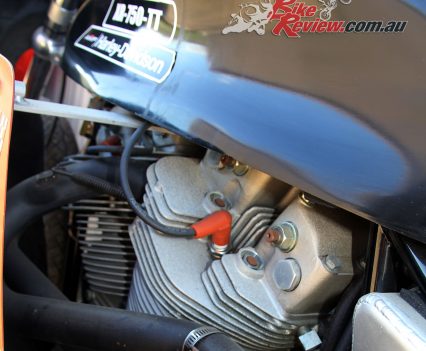




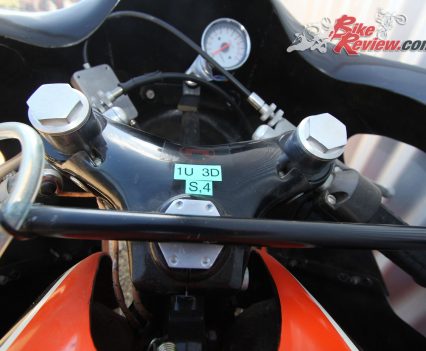

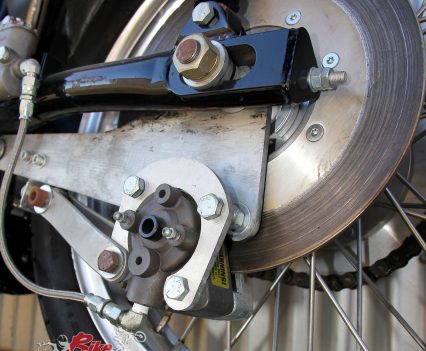


















July 14, 2018
In case anyone is interested, the real Lucifer’s Hammer can be found in Statesville, North Carolina at Tilley Harley-Davidson. The long standing dealership owned by Don Tilley and his wife Robinette. Don Tilley and rider Gene Church helped bring Lucifer’s Hammer to fruition after failed attempts by the Motor Company to win on the bike. Lucifer’s Hammer sits on display on the showroom floor for all to see. Check it out!
September 27, 2019
I was at road America in 1983 racing a triumph Bonneville in the battle of the twins JAY sPRINGSTEEN was there riding Lucifer’s Hammer I tried to follow him through the right hander at the top of the straightaway. I remember him dragging his knees through the corner. and that bike had such incredible power. I realized real quick that I was way out of my league’. But it was the best fun you could have with your pants on. And Jay is such a cool dude. He can still pitch it sideways and show the new guys how its done,
October 8, 2019
What an awesome story to have and a memory to cherish – racing is so good, there are lots of those top moments to make up for the weekends spent stressed out trying to fix things in the pits or the late nights repairing crash damage – or the long drives – or the empty bank account! Cheers for sharing. Jeff.
January 10, 2024
Who exactly are these firms that will build these replicas?